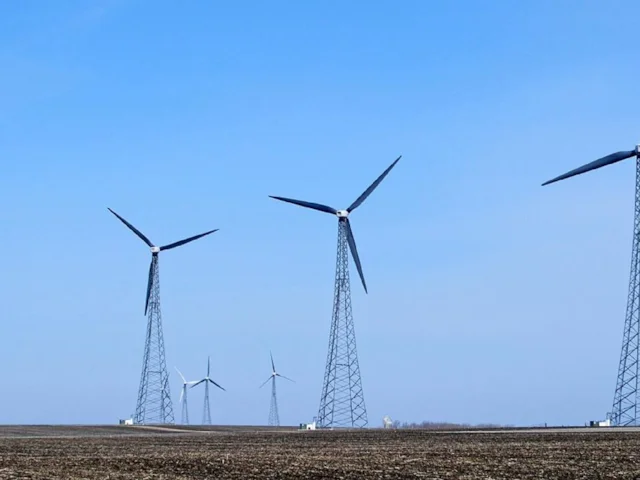Wind farm bird deaths more than thought
2a779cc8-2677-4ae9-8cd5-a2ee575863b2

New research from the United States indicates that bird deaths from wind farm collisions may have been underestimated by up to 30 per cent.
After the sad death of the White-throated Needletail on Harris, Outer Hebrides, on 26 June when it hit the shaft of a wind turbine on the island, some birders were vocal in their disapproval of the prominent energy generators, proclaiming them to be killers of bird in large numbers. While some of these claims were somewhat exaggerated, it turns out that they may indeed be more dangerous than thought previously.
A new study just published in the United States has estimated that around 573,000 birds were killed by wind turbines in 2012 (including 83,000 birds of prey), in increase of 30 per cent on a previous estimate by the US fish and Wildlife Service in 2009. Bats are even worse hit, says author K Shawn Smallwood, and probably top 888,000 killed per year.
Clearly this has serious implications for the renewable energy industry, which bases much of its investment and publicity on the safety and environmental sustainability of the machines. Smallwood also believes his figures are underestimated, owing to the incompleteness if reports of bird and bat deaths from different states, in particular Texas.
Added to this, wind farm legislation in the USA is being loosened, with permits to allow the killing of Bald and Golden Eagles, Whooping Crane, Piping Plover and California Condor by wind turbines all under review or being granted in some states.
Despite being based in incomplete data, Smallwood suggests that there should be greater transparency in reporting the deaths of flying animals in the States as well as a cross-state standard method of measuring and comparing figures. Even so, the increase in deaths suggested by the more rigorous statistical methods are worrying indeed, and should provide justifiable concern for both conservationists and the renewable energy industry in Britain and Europe.
Reference
Smallwood, K Shawn. 2013. Comparing bird and bat fatality-rate estimates among North American wind-energy projects. Wildlife Society Bulletin 37: 19-33.
After the sad death of the White-throated Needletail on Harris, Outer Hebrides, on 26 June when it hit the shaft of a wind turbine on the island, some birders were vocal in their disapproval of the prominent energy generators, proclaiming them to be killers of bird in large numbers. While some of these claims were somewhat exaggerated, it turns out that they may indeed be more dangerous than thought previously.
A new study just published in the United States has estimated that around 573,000 birds were killed by wind turbines in 2012 (including 83,000 birds of prey), in increase of 30 per cent on a previous estimate by the US fish and Wildlife Service in 2009. Bats are even worse hit, says author K Shawn Smallwood, and probably top 888,000 killed per year.
Clearly this has serious implications for the renewable energy industry, which bases much of its investment and publicity on the safety and environmental sustainability of the machines. Smallwood also believes his figures are underestimated, owing to the incompleteness if reports of bird and bat deaths from different states, in particular Texas.
Added to this, wind farm legislation in the USA is being loosened, with permits to allow the killing of Bald and Golden Eagles, Whooping Crane, Piping Plover and California Condor by wind turbines all under review or being granted in some states.
Despite being based in incomplete data, Smallwood suggests that there should be greater transparency in reporting the deaths of flying animals in the States as well as a cross-state standard method of measuring and comparing figures. Even so, the increase in deaths suggested by the more rigorous statistical methods are worrying indeed, and should provide justifiable concern for both conservationists and the renewable energy industry in Britain and Europe.
Reference
Smallwood, K Shawn. 2013. Comparing bird and bat fatality-rate estimates among North American wind-energy projects. Wildlife Society Bulletin 37: 19-33.

